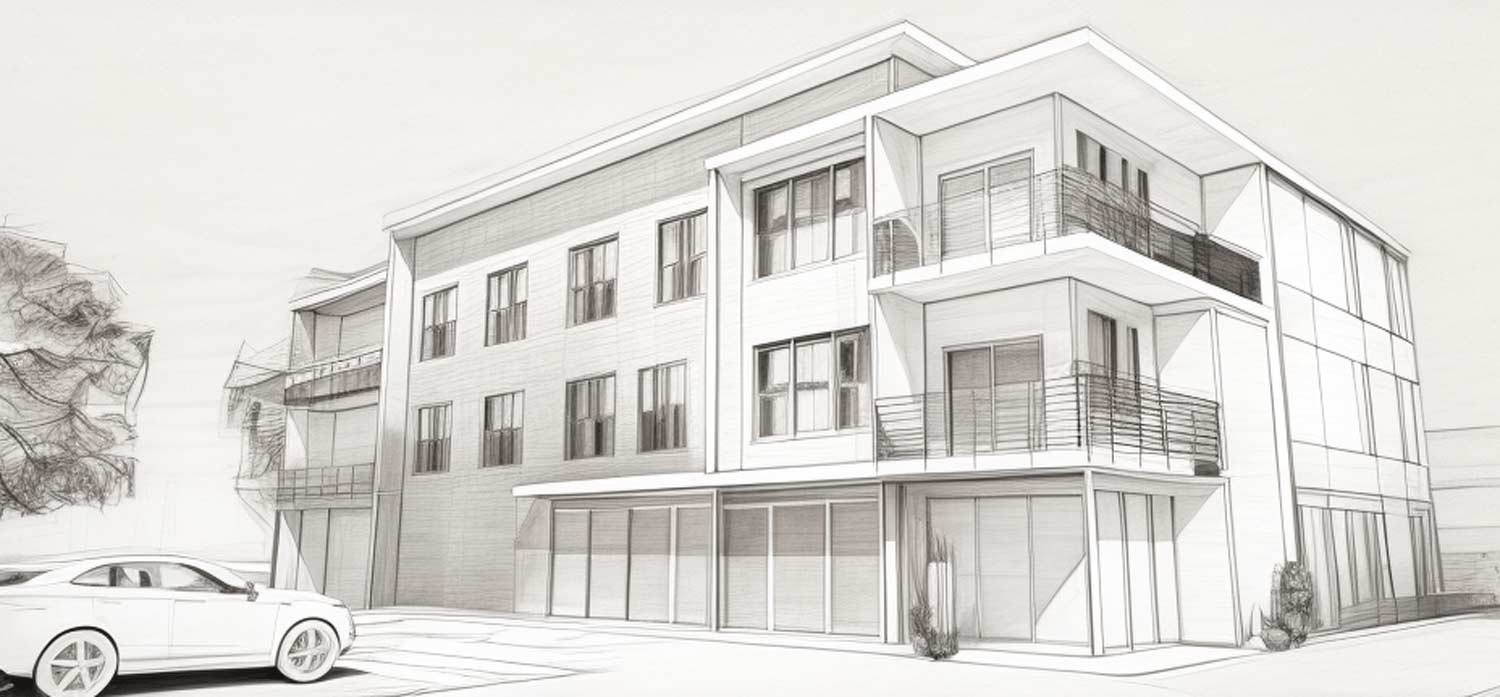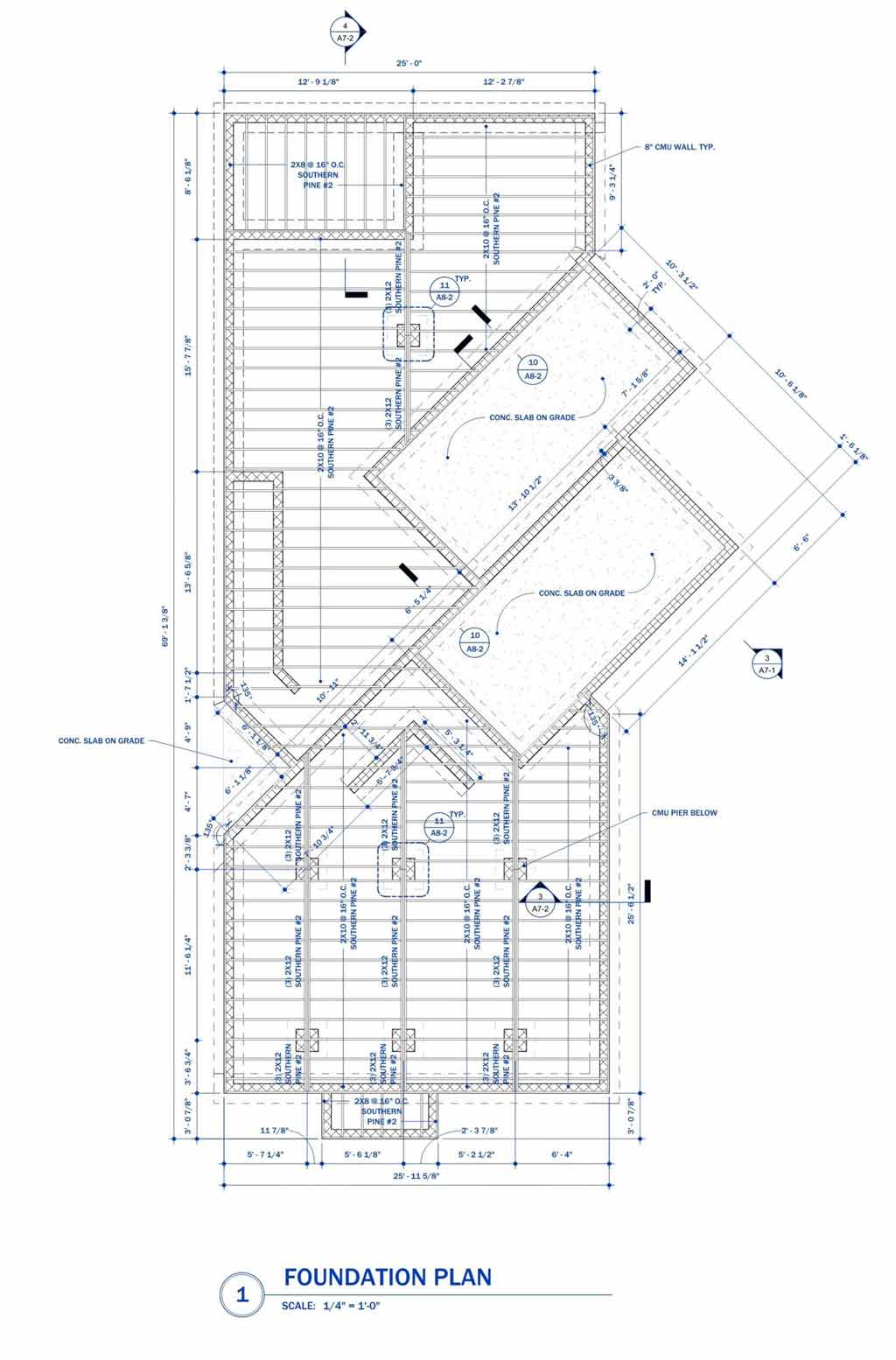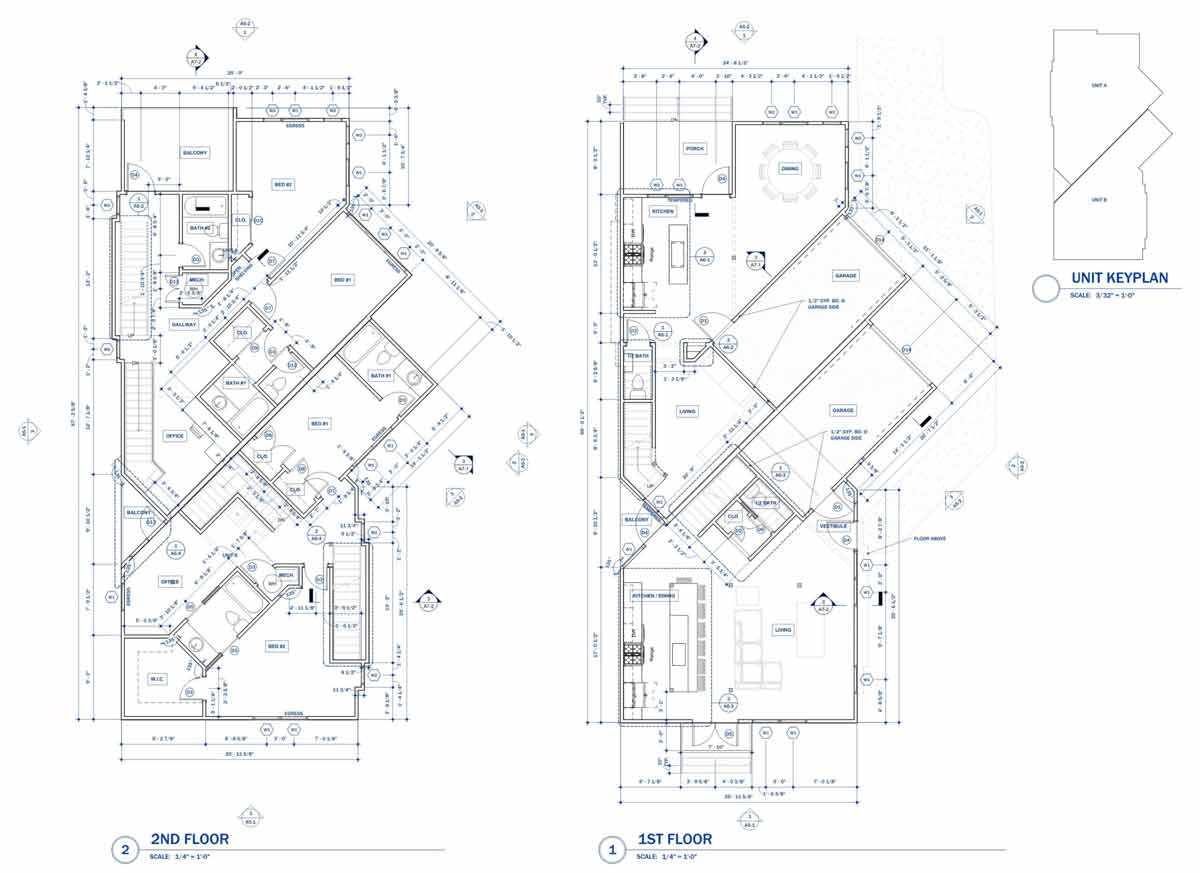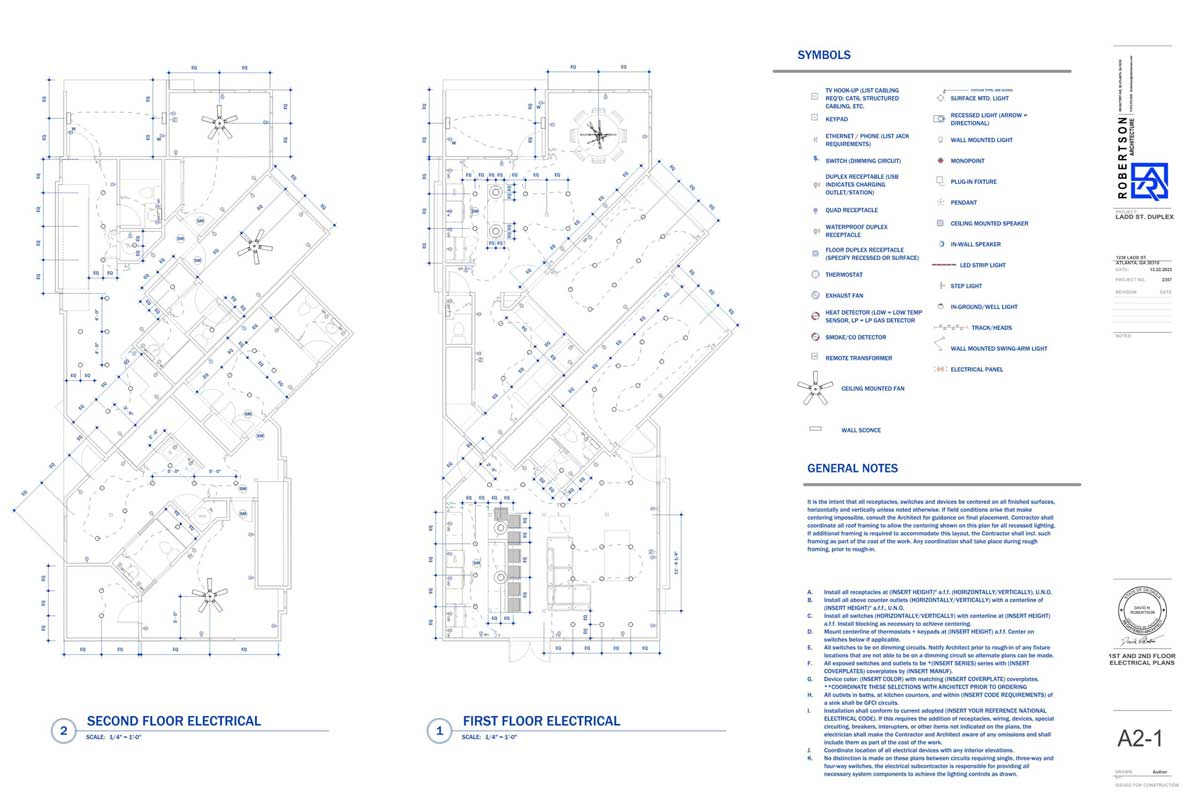
7 Stages of the Architectural Design Process: From Concept to Construction
Understanding the stages of architectural design makes it easier to go from idea to execution.
Architectural design is more than just grabbing a piece of sketch paper and laying out an idea or asking an AI app to create an ultra-modern investment property with a resort-style infinity pool and tennis courts. Real architectural planning is creative and technical. It covers everything from aesthetics and structural requirements to permits and contractor bids.
The purpose of the architectural design process is to solve as many logistical and technical challenges as possible before the first shovel hits the ground. This reduces unexpected issues during the construction process and helps ensure the project meets the client’s expectations.
At Robertson Architecture, our mission is transforming our clients’ ambitions into real, functional building projects. Collaboration is at the core of everything we do. Clear communication among the architect, design team, civil engineer, project manager, and client is essential to success.
Below, we’ll discuss each step in detail.
Step 1: Pre-Design
The first step of the architectural design process is pre-design. Involving the architect early—even during site selection—helps avoid costly mistakes later.
At Robertson Architecture, our team is often involved as early as the site selection phase. We help clients evaluate project requirements and determine the highest and best use of land.
We help our clients analyze each site for the highest and best use. If a site seems like a good fit for the project, we provide a hand sketch of the test fit so our client can picture how the site and structure will work together.
In the pre-design phase, the architect will speak in depth with their client about the scope of the project and their vision for the property. Based on this conversation about the client’s goals, the architect uses the pre-design phase to research the desired location’s zoning laws and building codes.
During pre-design, we also:
- Discuss the client’s goals and vision
- Review zoning regulations and building codes
- Understand the budget and project pro forma
This architectural planning phase lays the groundwork for the rest of the architectural design phases.
Step 2: Schematic Design Phase
Once we’ve gathered essential project information, we begin schematic design. This phase focuses on the broad concept and technical layout of the building.
During the schematic design phase, the architect will work closely with the design team to create:
- Floor Plan Drawings
- Building Elevation Drawings
- Site Planning
- Zoning Analysis
- Proposed Design and Building Code Analysis
This is where the building design takes shape on paper. Once these drawings are complete, we review them with the client. Making changes now is easier than during construction, saving both time and money.
Step 3: Architect Design Development
With the approved schematic design approved, materials and finishes are selected in the design development phase with consideration of the client’s budget and development goals. This is one of the most exciting architectural design phases because the project begins to look and feel real.
In this phase:
- Materials and finishes are selected
- A 3D rendering may be presented
- The structural engineer and civil engineer are brought in to evaluate structural and site concerns
Design development also includes a preliminary pricing evaluation. A general contractor or project manager estimates construction costs based on the proposed materials and scope. This helps keep the project aligned with the client’s budget.
Step 4: Construction Documents
This next step is the construction documentation phase.
Construction documents include final floor plans, elevations, and technical details. These are submitted to the Authority Having Jurisdiction (AHJ) for review.
These documents are the reference point for the construction team throughout the building process. Upon issuance of the permits, the general contractor agrees to build the set of drawings approved by the AHJ. Since these documents are so important, an architect will spend a lot of time ensuring proper compliance for delivery at this stage. Once approved, these plans guide the entire construction process.
Step 5: Bidding
In the bidding phase, general contractors submit their estimates for the scope of work based on the construction plans.
The architect is a liaison between the contractors and the client. We provide feedback based on our knowledge of pricing, scope, and quality. Many times, we recommend contractors from our network who have delivered outstanding results on previous building projects.
The client may have already decided on a builder or construction company for their project. However, a formal bid ensures that the builder can meet both the design and budget expectations.
Step 6: Building Permits
When the construction documentation phase and bidding are complete, the architect will send the documents to the AHJ. This is usually the city or county where the building project will be located.
The AHJ ensures the plans comply with:
- Local zoning requirements
- Building codes
- Structural and environmental standard
This step is the wildcard. Delays are often outside the design team’s control.
No construction can happen until the AHJ approves the plans. The design and build teams can use this time to prepare for the next phase: construction administration.
Step 7: Construction Administration
With permits in hand, the construction team is selected, and building will commence. The architect should be available throughout construction for contractors to consult on the plans and be ready if any changes arise. Your architect will be your advocate if something isn’t being built to the agreed-upon plans.
- Responding to contractor questions
- Addressing any unexpected site conditions
- Ensuring the project is built to the approved plans
At Robertson Architecture, we believe communication is vital to a successful project. We want to work on a team with your contractors to accomplish your vision.
The Architectural Design Process Saves You Time and Money
The architectural design process is a concept formulated to limit the number of mistakes that can occur in the building phase. By investing time in the planning stage, you’re setting your project up for success during construction.
Our team of professionals has this process down to a science. We are our clients’ advocates every step of the way. Surpassing your ambitions and goals for a project is what drives us.
Are you ready to start a new project? Contact us today to set up a consultation and learn more about our architectural design process!
Author: David Robertson is an Atlanta based architect and founder of Robertson Architecture. Robertson Architecture on the premise of helping entrepreneurs and like-minded individuals exceed their goals.
In 2018, Robertson Architecture was formed with the single focus of helping homeowners and entrepreneurs exceed their goals. The firm works with custom residential homes, townhouses, restaurants, and hotels all across the Southeast. David has a passion for helping entrepreneurs and homeowners realize their dreams.
With over 10 years of experience, David spent the beginning part of his career working on small to medium sized commercial projects across the U.S., including hospitality projects, office buildings, multi-family, and custom homes.
- David Robertson AIA NCARB
- Office 470.795.9596
- info@robertsonarc.com







0 comments